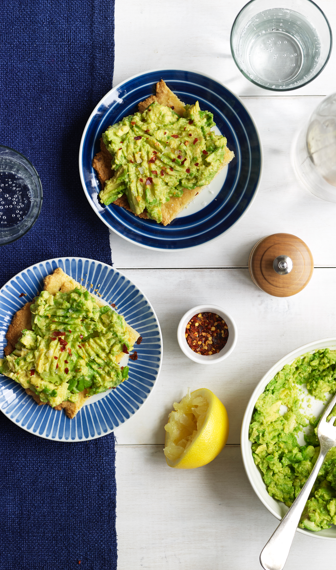Everyone makes mistakes, but you can learn from ours and save yourself some time and heartache! Here’s how to do Atkins right and avoid making some all-too-common errors:
Mistake #1: Counting Total Carbs, not Net Carbs. On Atkins, you need to count Net Carbs, which are the grams of total carbs minus grams of fiber, which has virtually no impact on your blood sugar. Don’t forget to count lemon juice and other acceptable condiments and include 1 gram of Net Carbs for sugar substitutes. And most important, don’t use your carb allowance for foods that are high in sugar and starches and low in fiber. Finally, don’t make the mistake of thinking no carbs are better than 20 grams of Net Carbs and eat only protein and fat. You can download the Atkins Carb Counter to track your daily carb intake.
Mistake #2: Skimping on Veggies. Make sure you are eating 12 to 15 of your net carb grams in the form of foundation vegetables. This translates to about 6 cups of leafy greens and 2 cups of cooked veggies, which means you could have a big salad at lunch, a side salad at dinner and still have several servings of your favorite cooked veggies.
Mistake #3: Saying No to H2O. Eight daily cups is the standard recommendation, but the larger and more active you are, the more you need. As long as your urine is clear or very pale, you’re drinking enough. Two cups can come from coffee or tea (caffeinated is fine), herb tea, sugar-free sodas or broth. Don’t ever skimp on fluids in a misguided effort to see a lower number when you hop on the scale. Not drinking enough water actually makes your body retain fluid as a protective mechanism.
Mistake #4: Going Salt-Free. A little salt (or broth or tamari/soy sauce) can help you avoid experiencing weakness, headaches, muscle cramps or lightheadedness as your body transitions to primarily burning fat for energy. Since Atkins is a naturally diuretic diet, you don’t need to avoid salt to minimize water retention. The symptoms can be the result of an electrolyte imbalance caused by losing minerals along with fluid. Caution: continue to limit salt if you’re being treated for hypertension or your doctor has advised you to limit sodium intake.
Mistake #5: Not Eating Enough Protein. Eat 4–6 ounces of protein at each meal, depending on your height and gender. Four ounces may be enough for a petite woman; a guy may need 6 ounces. A very tall guy may even need a bit more. But eating too much protein—or eating only protein and not vegetables—or conversely, skimping on protein, will interfere with weight loss and/or leave you hungry and subject to carb cravings.
Mistake #6: Being Afraid of Fat. You need dietary fat to help stimulate the burning of body fat, and natural fats are fine when you control carb intake. Always accompany a carb snack with either fat or protein. For example, have cucumber slices with a piece of cheese.
Mistake #7: Eating Hidden Carbs. Read package labels so you can avoid added sugars and other sneaky carbs. Just because a package says it’s low in calories doesn’t mean it’s low in carbs. Avoid low-calorie products unless they’re labeled as low carb. Likewise, use full fat versions of mayonnaise, salad dressing and the like. Low-fat versions of packaged foods almost invariably add sugar to replace the flavor carried by oil. If the label is unclear, look up the food in the Atkins Carb Counter.
Mistake #8: Picking the Wrong Low-Carb Products. Use only Atkins low-carb products. Most of these have been tested to ensure that the impact on your blood sugar is minimal, and most are coded for Phase 1.
Mistake #9: Becoming a Slave to the Scale. Weigh and measure yourself weekly or use weight averaging. Your weight naturally varies across a three or four-pound range from day to day so weighing yourself daily is setting yourself up for disappointment and frustration. Moreover, if you are working out, you may actually be building muscle even as you shed fat, which may keep your weight constant, even as you trim inches and your clothes fit better. (Muscle is denser than fat and therefore takes up less space.)
Mistake #10: Not Recording Your Progress. Use a journal. You’ll be entering your weight and measurements weekly, but you will want to record your food intake and Net Carb count daily. This way, you can quickly see if you’re consuming more carbs than you think you are. You can use Atkins’ free tracking tools to track your progress.

